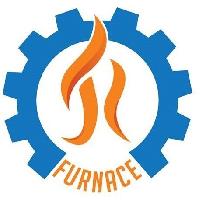Annealing Furnace – Restoring Material Strength and Workability Through Precision Heat Treatment

Posted by jrfurnace
from the Business category at
20 Jul 2025 07:21:24 pm.
By subjecting metals to a carefully controlled heat treatment cycle, an annealing furnace helps restore ductility, reduce hardness, and refine grain structure—making materials easier to form, weld, or machine.
What Is an Annealing Furnace?
An annealing furnace is an industrial thermal system used to heat materials—primarily metals—to a specific temperature below their melting point, hold them there for a defined time, and then cool them at a controlled rate. This process is intended to:
Eliminate internal stresses
Improve mechanical properties
Restore plasticity
Refine microstructure
The specific temperature and soaking time depend on the material type and the desired outcome. For example, carbon steel might be annealed at around 700–800°C, while aluminum alloys may require 300–400°C.
Types of Annealing Furnaces
Annealing furnaces come in a variety of designs, depending on the size of the components, material type, and production scale:
Box-Type Furnace
Standard for small and medium-sized parts; offers front loading and customizable heating profiles.
Bell-Type Furnace
Common in coil and strip annealing; ideal for surface-sensitive materials due to its protective gas capabilities.
Bogie Hearth Furnace
Suitable for large, heavy, or complex components. The bogie (movable hearth) simplifies loading and unloading.
Pit-Type Furnace
Designed for long vertical components like shafts, rods, or tubes; parts are suspended for even heat exposure.
Continuous Annealing Furnace
Perfect for high-speed, large-volume operations. Components move through multiple heating and cooling zones on conveyors.
Atmosphere-Controlled Furnaces
Maintains a non-oxidizing or reducing atmosphere (e.g., nitrogen, hydrogen) to prevent surface oxidation and scale formation.
A modern annealing furnace typically includes:
Temperature Range: 200°C to 1100°C (customizable)
Heating System: Electric resistance heaters, gas-fired burners, or induction coils
Insulation: High-efficiency ceramic fiber modules or refractory bricks for minimal heat loss
Temperature Uniformity: Multi-zone control for consistent treatment across the entire load
Programmable Logic Controller (PLC): For recipe-based control and repeatable performance
Cooling System: Controlled cooling using forced air or inert gases, depending on the application
Safety Features: Over-temperature cutoffs, interlocks, flame monitoring, and emergency stops
Annealing furnaces serve a broad range of industries that require post-processing treatment of metal components:
Automotive Industry: Softening of stamped body parts, drive shafts, and engine components
Aerospace: Annealing of turbine blades, structural airframe components, and alloy sheets
Electronics: Treatment of copper wires, aluminum foil, and conductive metals
Steel Plants: Coil annealing, bar treatment, and de-stressing of large forged sections
Tool and Die Manufacturing: Conditioning of die blocks and cutting tools for further machining
Construction: Processing of rebar, plates, and beams to improve formability and performance
✅ Improved Ductility: Treated materials bend and stretch without cracking, ideal for shaping and forming.
✅ Enhanced Machinability: Softer metals reduce tool wear and allow for cleaner cuts.
✅ Stress Elimination: Minimizes the risk of warping or failure under load.
✅ Microstructural Refinement: Produces uniform grain size, which enhances mechanical performance.
✅ Corrosion Resistance: In certain alloys, annealing improves surface chemistry.
✅ Consistency: Provides repeatable material properties across production batches.
Technological Advancements in Annealing Furnaces
Modern annealing furnaces have evolved with industry demands, now offering:
? SCADA Integration: Real-time monitoring, fault alerts, and remote access
? Energy Recovery Systems: Utilize flue gases to preheat combustion air, reducing fuel consumption
? Hybrid Heating Options: Combining electric and gas for improved control and energy flexibility
? Data Logging & Batch Reports: Ensure quality control and traceability
? Fast Cooling Chambers: Reduce cycle times without compromising metallurgical integrity
These features support higher throughput, reduced environmental impact, and improved repeatability in production environments.
Conclusion
An annealing furnace is a cornerstone in heat treatment operations, delivering the precision and consistency needed to enhance metal performance. Whether you're preparing materials for deep drawing, machining, or high-load applications, annealing ensures the workability and integrity your production demands.
With customizable designs, energy-efficient operation, and automation-ready technology, annealing furnaces remain an indispensable solution for manufacturers worldwide.
0 Comments



